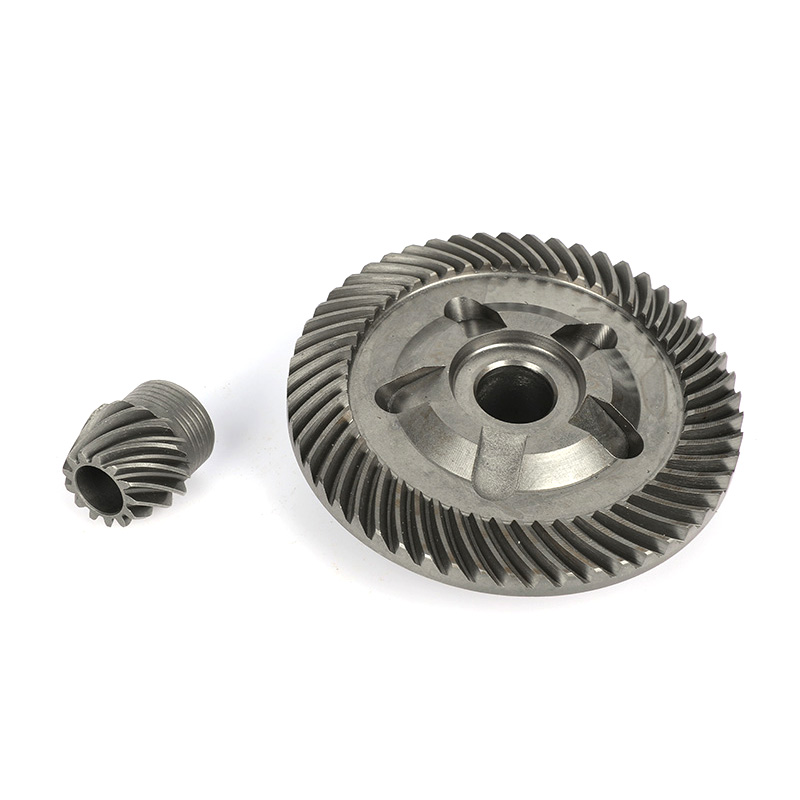- Home
- Products
- About Us
- Application
- News
- Contact Us
Web Menu
- Home
- Products
- About Us
- Application
- News
- Contact Us
Product Search
Exit Menu
How Does Gear Quality Affect Power Tool Performance?

Gear quality plays a significant role in the overall performance of power tools. The gear for power tools is responsible for transmitting motion and power between the motor and the tool's working parts. If the gears are made from low-quality materials or are poorly manufactured, the efficiency and durability of the power tool can be compromised. Understanding how gear quality impacts power tool performance is important for both manufacturers and users who want reliable and long-lasting equipment.
One of the main ways gear quality affects power tool performance is through efficiency in power transmission. High-quality gears ensure smooth and consistent transfer of power from the motor to the tool's output components. This allows the tool to operate effectively and deliver the intended torque and speed. When gears are of lower quality, they may have surface imperfections, improper tooth profiles, or poor alignment, all of which can cause energy loss and reduce the tool's operational efficiency.
Durability is another critical aspect linked to gear quality. Gears in power tools are subjected to significant stress and wear during use. Materials such as hardened steel or specialized alloys are often chosen for gear construction to withstand repeated loads and resist deformation. If the gear for power tools is made from inferior materials, it may wear out quickly, leading to failure or the need for frequent replacements. Durable gears help extend the service life of power tools and reduce maintenance costs.
Noise and vibration levels in power tools can also be influenced by the quality of gears. Well-manufactured gears with precise tooth geometry and smooth surfaces tend to produce less noise and vibration during operation. This not only improves user comfort but also reduces the risk of damage to other components caused by excessive vibration. In contrast, gears that are rough or misaligned can generate unpleasant sounds and increase mechanical stress.
The accuracy and consistency of a power tool's output are affected by the gear quality as well. For tools that require precise speed control or torque delivery, such as drills or grinders, the gears must maintain consistent engagement without slipping or backlash. Poor-quality gears may introduce play or irregular movement, which can affect the precision of the tool's operation. High-quality gears contribute to stable performance, which is important in both professional and DIY applications.
Heat generation during operation is another factor related to gear quality. Gears that fit well and have proper lubrication generate less friction, preventing overheating. Overheated gears can degrade lubricants, cause material expansion, and lead to premature failure. Gears with rough surfaces or poor alignment increase friction, causing more heat and negatively impacting the power tool's reliability.
The overall maintenance requirements of a power tool are linked to gear quality too. Tools with high-quality gears generally require less frequent servicing since the parts last longer and perform more consistently. On the other hand, tools with substandard gears may need frequent adjustments, lubrication, or replacement parts. This can increase downtime and operating costs.
The gear for power tools significantly affects performance through power transmission efficiency, durability, noise and vibration levels, accuracy, heat management, and maintenance needs. Choosing power tools equipped with quality gears helps ensure consistent operation and longer tool life. For users and manufacturers alike, investing attention in gear quality can result in more reliable and satisfactory power tool performance.
-
Add: 1st Floor, No. 2, Huanan Road, Zhengcun, Economic Development Zone, Yongkang City, Zhejiang Province, China
-
Tel: +86-0579-87133113
-
E-mail: [email protected]

 English
English русский
русский Español
Español